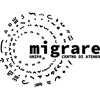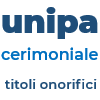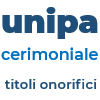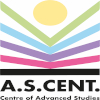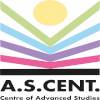CEAR-09/A – Urban and architectonics composition
Description
The scientific-disciplinary content of the SDS CEAR-09/A – Urban and architectonics composition refers to the architectural project, in its extension from detail to the urban dimension, as a process and moment of synthesis of formal, functional and technical contributions. They are divided into methodological (concerning the theories of design), analytical-instrumental (for the study of the distributive, typological, morphological, and linguistic characteristics of architecture and the city), compositional (concerning the aggregative and formal logic with which the body is defined in its elements and in its parts and with which it relates to its context) and design aspects (for the solution of specific issues related to interventions ex novo or on the built environment).
The Scientific Disciplinary Sector is interested in scientific and educational activity in the field of architectural design and, in particular, on the problems and techniques of contemporary design, environmental transformations, and on the application and experimental aspects, aimed at the control of typological, formal and constructive characteristics, as well as on the connections with the structural and technical installation contents. The project is assumed with an approach that conceives design as a synthesis of formal, functional and technical aspects; It is also intended as a response to the needs of humans and a contribution to the construction of the physical cultural and social environment that humanity inhabits, as well as an instrument of knowledge and of the reality that we are called to modify.
The Scientific Disciplinary Sector is also interested in the shape of the contemporary city and the phenomena that have determined its transformations, applying and experimenting processes for the modification of its parts. It also pays attention to the architecture of the landscape and the open spaces in all anthropogenic conditions and at all scales; in fact, it recognizes the geographical and topographical conditions, the environmental diversity and the historical pre-existences, architectural, ecological and formal characteristics qualifying for the sustainability of the transformations; it deals with the interaction of infrastructure with the landscape.
The ICAR14 sector is present in the Department and in the Schools of Engineering in the awareness that Architecture has always been a territory belonging to the tradition of Engineering, in the field of education and training, as in the concrete experience of the project and construction. In fact, in the stratified and extensive production of engineers, an interesting testimony is constantly offered by the sensitivity not only towards construction but also in the definition of languages and the role of technic. Architecture, moreover, is intrinsic to innumerable experiences and specific typological traditions, linked to the modifications of the space, the construction of the infrastructures, the shape of the structure, the interferences with the landscape (natural and urban). In Architecture different souls of Engineering intersect.
Research activity
In the fields of research, the most current themes and issues of contemporary architecture are explored and verified. Research is understood as the place from which the motivations, the foundations and the theoretical structure of teaching itself derive; vice versa, in teaching, the acquisitions and experiences gained in research are finalized.
The central topics revolve around the architectural project, with thematic declinations that concern the space, the territories (physical and cultural) of modernity, and the modifications of the environment (natural and built). In addition, the internal issues of the project are examined in depth, mainly related to the role and value of theory in the current architectural culture. The research themes provide opportunities for the organization of conferences, seminars and workshops and allow a fruitful collaboration and interaction with other university institutions (often foreign) and with local administrations and local authorities.
The main research topics addressed in recent years concern:
- Relations between architecture-nature, nature-artifice in contemporary landscapes, through the study of the triad Environment-Nature-Architecture;
- Relations between project theory and practice in contemporary experience;
- Role of the Composition and the architectural project for the economic, social and cultural development of the territory, in particular in “fragile” areas;
- Spaces and places for culture in the contemporary city;
- Interpretation of the tradition of the studies of Architecture in the territory of Engineering and its role in contemporary reality in the light of the interdisciplinarity and complexity of the process;
- Construction of the language of architecture read in the relationship between form and technique;
- Infrastructures of the territory and construction of the landscape: architecture and infrastructure design in natural landscapes, man-made and metropolitan areas;
- Interference between architectural composition and other “boundary” compositional disciplines.
Main research projects
- EUROSTART: Planting trees. Cultures and strategies for new forms of the contemporary urban landscape (2022);
- “Arquitectura construida y espacio habitado en los poblados de colonizacion de Italia y España” | "Built architecture and inhabited space in newly founded cities in Italy and Spain", University of Palermo – University of Extremadura (2021);
- Incipit_Lab - Coordination (national and local) of the first annual Architectural Design Laboratories (2015-2020);
- “Collaboration agreement for the activities related to the recovery of the historic center of Alcamo”, account of third parties CIRCES - Municipality of Alcamo (2018);
- International Cooperation University of Palermo and Lviv Polytechnic National University - Ukraine (2017);
- “Collaboration agreement for the activities related to the recovery of the historic center of Caltabellotta”, account of third parties CIRCES - Municipality of Caltabellotta (2017).
Keywords
Architecture, Project, Construction, Environment, Nature, Infrastructure.










